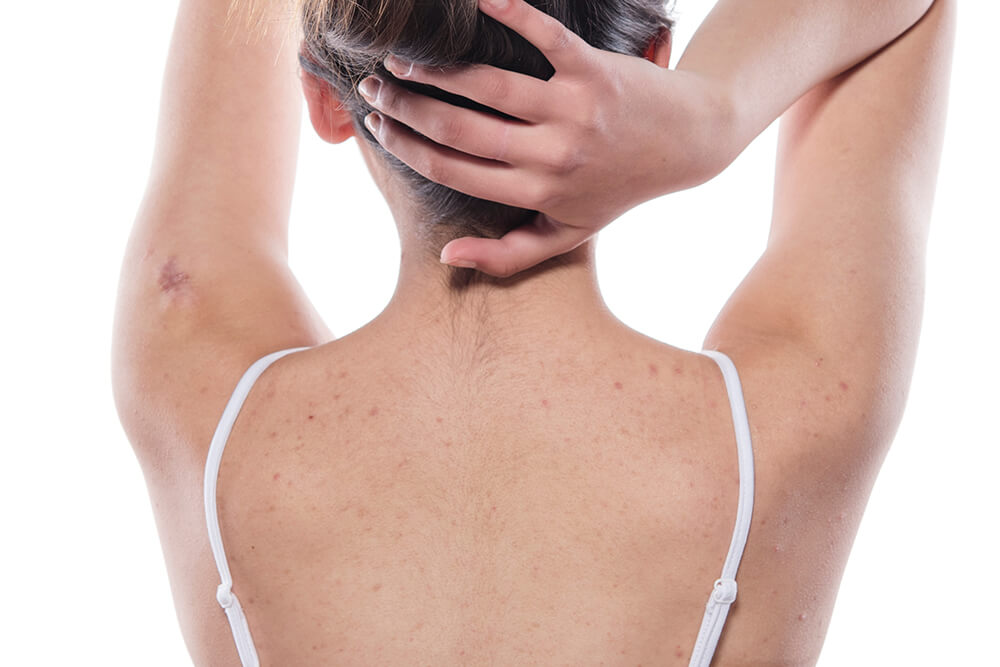Electrolysis on
Sun Damaged Skin
Electrolysis on Sun Damaged Skin

Can I Get Electrolysis Treatment on Sun Damaged Skin?

In addition to avoiding tanning or sunburn prior to your electrolysis appointment, it’s important not to expose the treated area to the sun for at least 24 hours after treatment. Preferably, you will be able to keep the affected area out of the sun for at least 48 hours. All treated hair follicles will be slightly inflamed and more open than normal, meaning that the area that underwent electrolysis will be more vulnerable to bacteria and pathogens. If the area is going to be exposed to sunlight, it is more important than ever to protect the skin with high caliber sunscreen. A broad-spectrum sunscreen, one which provides protection from UVA and UVB rays is preferable. Under no circumstances should you expose the skin to a tanning lamp or infrared warming lamp for at least two and preferably three days.
After electrolysis treatment, it is common for some temporary redness to manifest. This is a standard side effect and nothing to be concerned with. The important thing to remember is that rubbing, scratching, or picking at the affected area is to be avoided as much as possible. A small amount of scabbing is expected— this will prevent bacteria from finding its way into the open pores and further aggravating the inflammation.
Electrolysis on Acne


Electrolysis Treatment for Age Spots
After treatment, you’re likely to notice redness and swelling. Scabs will most likely form over the areas of treatment. It’s important to leave them to heal, which could take as long as two weeks. Your new, clearer, younger-looking skin is growing in underneath it. When it heals completely and the scab flakes away, the new skin will be somewhat discolored for a while until it settles back into its normal coloring. Don’t be alarmed.
Electrolysis’ Effect on Skin


How to Minimize Electrolysis Side Effects
Electrolysis by Alison has over two decades of experience helping women with facial and body hair problems. If you are struggling with your peach fuzz or more prominent hair and don’t know what to do, we can help. Hundreds of thousands of women in similar situations have gone through the same experience. Almost all of them noticed substantial improvements after just one or two sessions. Let us do the same for you. Our electrolysis clinic is conveniently located in West Los Angeles. It’s designed to be a soothing and pleasant space to help you relax during the process. In our serene surroundings you can take the next step towards beautification. We look forward to helping you with your beauty goals!
Post-Electrolysis
Application of ice immediately after treatment can soothe the skin, and reduce any swelling.
Avoid hot tubs, swimming pools, or fresh water swimming for 48 hours after your procedure.
Don’t touch the treated area with your hands. If you absolutely must, cleanse your hands first.
A mild antiseptic like witch hazel can help keep the skin clean if applied two or three times a day. If you are in a dusty environment or sweating more than normal, apply it more often.
Don’t use any heavy creams or topical acids on your skin for 48 hours after treatment. Be cautious with their use afterwards.
Before you work out or do another strenuous activity, consider using an antibiotic cream or aloe gel on the affected area.
Don’t manually exfoliate for 48 hours after treatment.
If you apply makeup to the affected area, make sure it’s fresh and hypoallergenic so as not to inflame or infect your skin.
Expert Electrolysis with Alison
When you’re looking for an electrologist that can handle your procedure with a minimum of side effects, you should look no further than Electrolysis by Alison. In business for over 20 years, Alison is a professional licensed by the State of California. She has perfected a one-handed technique that allows her to work quickly and precisely to remove hair from arms, legs, underarms, neck, face, back, shoulders, hands, feet, and more. Unlike laser treatments, electrolysis can work on people of any skin color, dark hair or light. Alison specializes in treating women who suffer from hormonal imbalances such as PCOS causing male pattern hair growth, but is experienced in providing all kinds of electrolysis services.